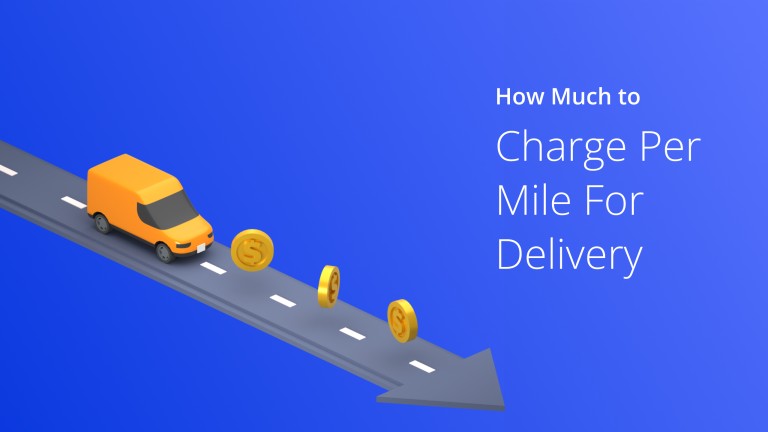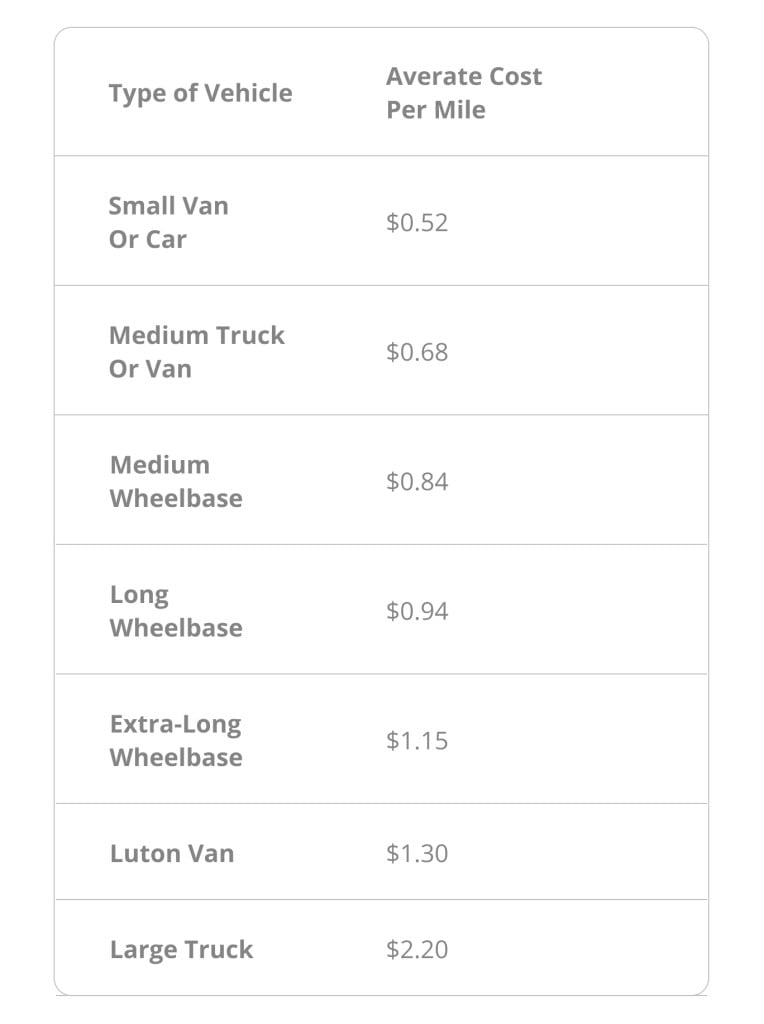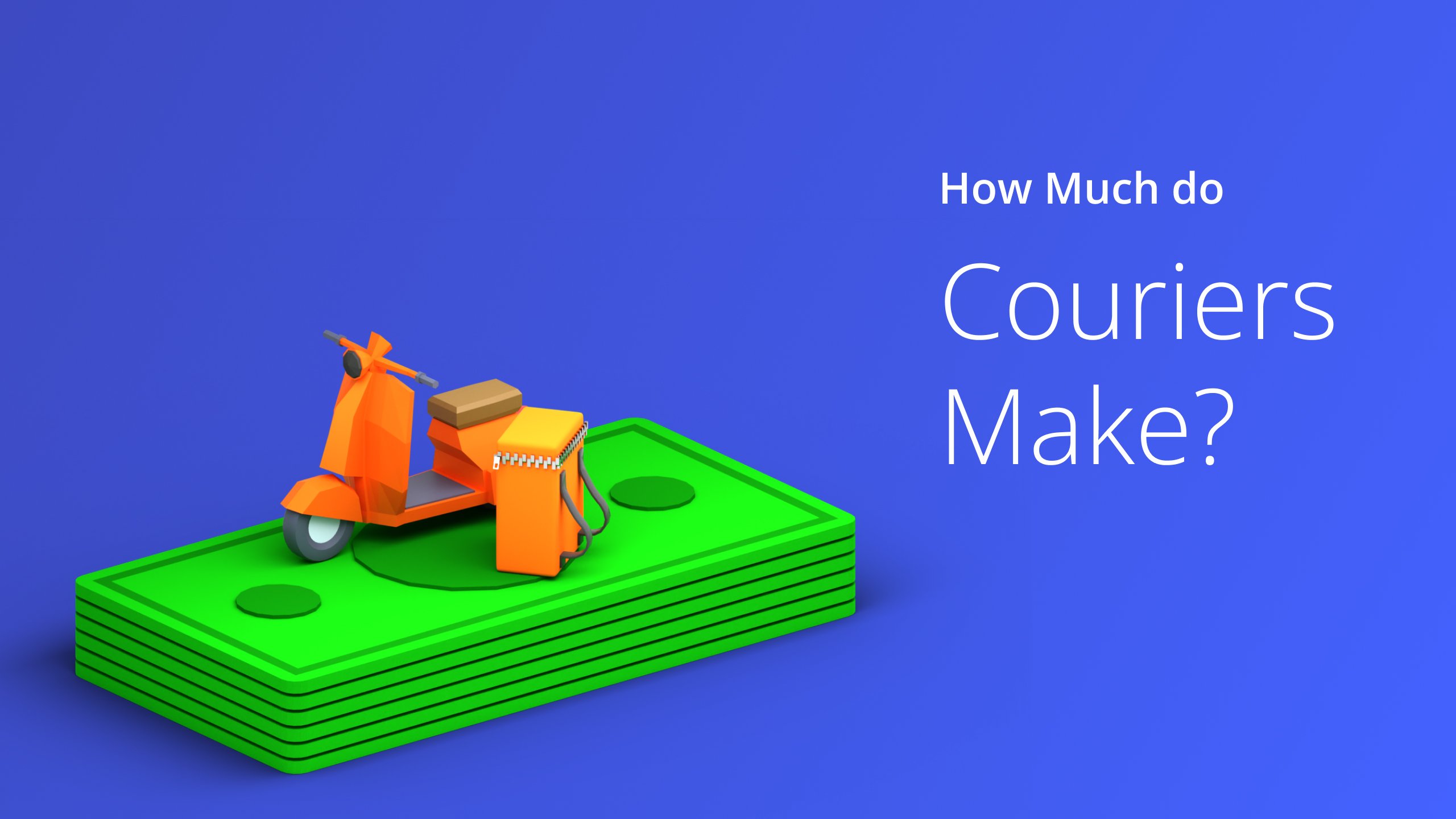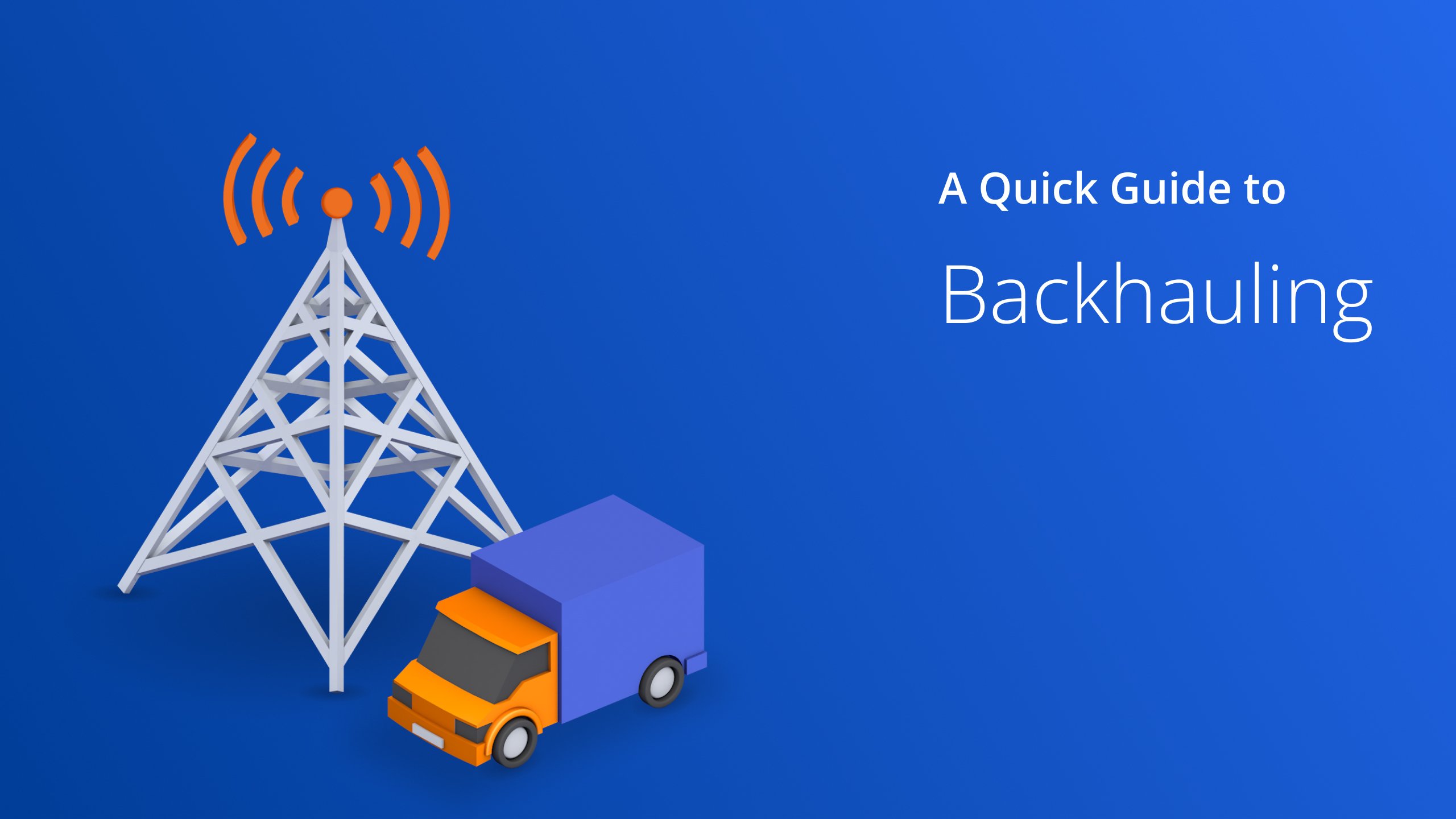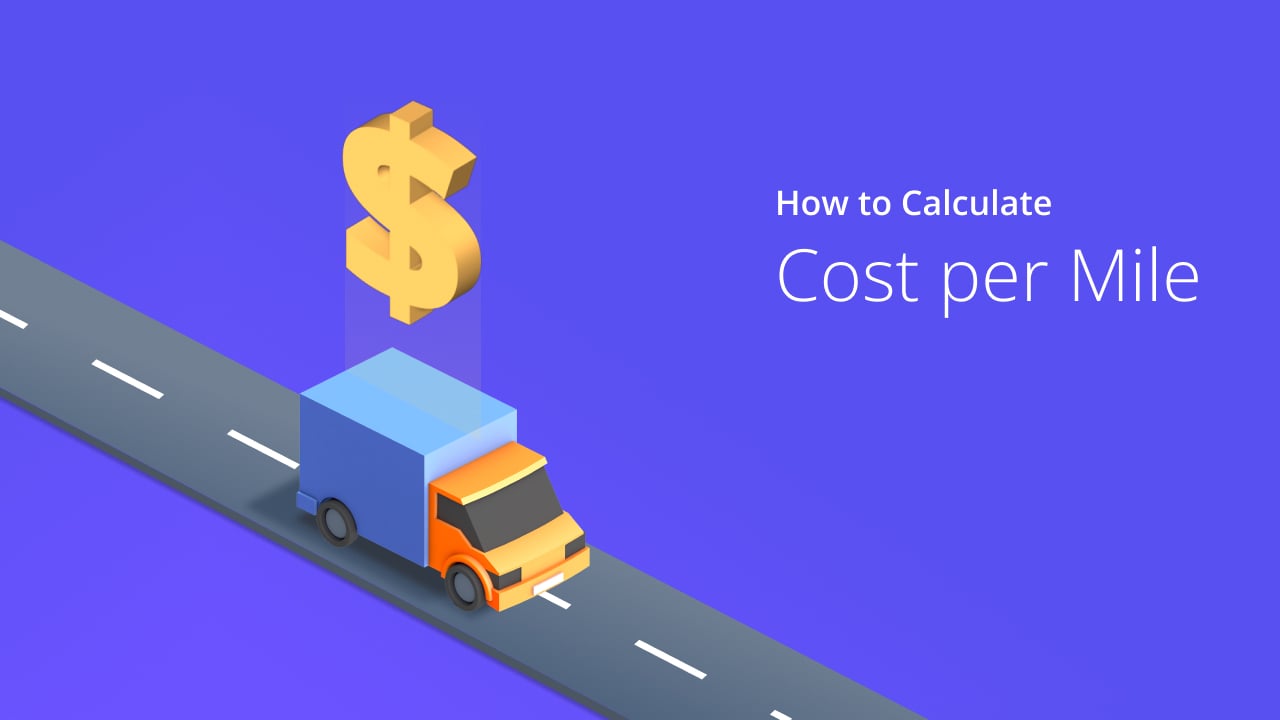The best way to profit from a delivery business is to know how much to charge per mile for each delivery.
This may seem like a daunting task. Thankfully, we’ve researched to let you know how to calculate the appropriate pricing metric, including all additional costs.
This way, you can profit, and your customers receive a fair quote.
Table of Contents
How Much To Charge Per Mile For Delivery Business
The first thing you must consider when deciding how much to charge per mile for your delivery business is what type of delivery service you provide.
What is your niche, and which industry are you working with?
If it’s a specialized business, like delivering medical supplies, you can expect to charge a more premium price than, say, if you were transporting groceries.
The second thing you have to consider is the type of delivery business you have.
Subcontracting Your Own Company
If you are handling a small delivery operation, a fair price point would be to charge anywhere from $0.8 to $1.2 per mile and an additional $0.5 for your profit.
This number can also vary with the vehicle type used for delivery.
Subcontracting With A Company
If you choose to have another company handle your delivery operations, your delivery pricing can vary based on the type of delivery vehicle, location, fuel, and other delivery requirements.
Typically, these are the numbers you should be looking at:
Decide how much profit you’d like to make using these numbers as the minimum delivery fee for your courier service business.
Want To See For Yourself How Route4Me Can Boost Your Profits?

Multi-Stop Delivery Business
If your courier delivery service handles multi-stop deliveries, it’s highly imperative to invest in reliable delivery routing software like Route4Me.
These route planners can be in charge of making the painstaking effort of planning multiple deliveries while still ensuring a cost-effective delivery method.
With a multi-stop courier service business, you can charge according to the number of stops/deliveries. If you can cover 200 to 250 stops per day, you can charge around $1 per stop.
6 Ways To Calculate The Charge Per Mile For Delivery Business
1. Compare Your Competitor’s Charge
The first thing you have to consider when calculating the charge for your delivery business is to look at what your competitors are doing.
Identify the scope of the delivery area and average market value. This will give you a base number upon which you can consider additional factors like the industry, service, fuel, and many more.
You can also discover the other delivery services your competitors offer and at what price.
2. Forecast The Overhead Costs
Once you’ve done your initial market research, it’s time to forecast the costs. This is a rough estimate of a competitive rate for your courier service business.
Variable Expenses
Variable expenses are tricky to calculate as they vary from month to month. Examples are monthly utilities for the office space and hourly wages for your employees.
Your courier service business also has business-specific variable expenses, including regular maintenance and repairs of vehicles, toll fees, and licensing for your delivery drivers.
Fuel is another significant variable expense you should not take lightly.
Fixed Expenses
Fixed expenses include the expenses needed to run delivery jobs, including the following:
- Employee salaries
- Administrative and insurance costs
- Office space rent
If you’re choosing to rent a vehicle for your delivery business, you can also expect that the costs of the truck will be part of your fixed costs.
The great thing about fixed expenses is that you won’t need to calculate them again unless there is a change in your small business operations.
Miles Driven
Compensated Miles
Compensated miles are the miles driven as you’re en route to and from delivery jobs.
Deadhead Miles
Conversely, deadhead miles, sometimes called “empty miles,” are the miles driven after a delivery has been made.
This is when your truck is empty, and customers don’t pay for the miles as part of the shipping and delivery fee.
You may think deadhead miles are harmless, but they are an unavoidable cost that goes directly to vehicle maintenance, as they can cause additional wear and tear.
3. Divide Your Expenses By Mileage
Here’s when you will start calculating the delivery cost per mile.
Start by selecting a timeframe in which you can estimate delivery jobs. If this is your first time, you can start by picking a specific period (a single day of the week) and then tracking the number of miles driven during this period.
This can be done manually by checking your odometer or using a route planner.
Once you have that number, you can calculate your expenses for that specific period. Create a list of all your fixed and variable costs to determine your total expenses.
Once you have the numbers of your total expenses and the number of miles driven, divide your total expenses by the number of miles driven, and the result is your delivery cost.
4. Determine The Delivery Truck’s Size
You don’t want to charge potential customers the minimum delivery cost per mile because that won’t lead to good profits.
Here’s how you can factor in the delivery truck’s size to the cost you’ll charge your customers per mile.
Charge a minimum mileage fee for your courier services, including the delivery truck’s size, fuel consumption, and truck rental.
5. Conduct Market Research
At this point, conduct market research on the other courier services you’ll be competing with, how the industry works for them, and their market.
Visit your competitors’ websites and start exploring their courier services. Most couriers also offer a convenient pricing guide you can use to have a clear grasp of their delivery charge.
You also don’t have to stop at local delivery businesses — look at top couriers, like USPS, UPS, and FedEx, to give you a better sense of the typical pricing metric nationally.
6. Additional Factors
Now that you have your base price, it’s time to consider other factors that can impact your courier service and affect your rates.
Rush Or After-Hours Orders
Other clients want their orders immediately or outside regular business hours. If that’s the case, you should definitely charge extra money to compensate for possible delays in other orders.
Additional fees will be more than enough to cover rush or after-hours delivery.
Heavy Or Bulky Packages
It’s important to note what size packages you’ll be dealing with regularly. If you’re delivering small packages like clothes, you’re not going to be charging the same thing as someone who ordered a large package, like a wooden cabinet.
You also want to take into consideration the number of packages per customer. Suppose a single customer is ordering multiple packages.
In that case, there should be an extra charge depending on the space their packages take up, which otherwise would have been used for other customers.
Decide on your standard packages and charge an overweight fee if your customers go beyond that.
Waiting Charge
Some customers may not follow your schedule to the tee, such as not having their packages ready when you come to pick them up.
Keep this in mind, as it can put your whole operations behind schedule and lose you money in the long run.
Set a limit on waiting (ten minutes is a fair minimum), and let them know that you will charge extra if they go beyond this limit.
Why Calculate The Charge Per Mile For Delivery Businesses?
Improves Product Costing
Once you have the correct delivery cost, you can start improving your product costing to make a small profit margin to sustain your business.
Improves Decision-Making
Charging the correct delivery cost improves decision-making and sets up better pricing brackets.
You will also be more confident to charge at your price point, knowing how much money your delivery operations cost.
Scales Your Profits
Knowing exactly how much to charge for delivery scales up your profit margin, even in the face of the unpredictable nature of delivery businesses.
Frequently Asked Questions (FAQs) about Charging Per Mile
Is it better to charge per mile than per hour for deliveries?
Is there an average charge per mile for deliveries in the US?
Multi-Stop Route Planner App

In A Nutshell
The success of your delivery business highly depends on whether or not you charge competitively.
It’s essential to consider many factors that could affect how much you charge per mile for delivery businesses.
Office rent, utilities, labor, vehicle cost for maintenance, and fuel are some expenses that your business can’t do without. It’s important to know exactly how much you need to keep your business running.
Once you have this number, it’s time to identify how many miles you drive during a given period.
You can now calculate the cost per mile by dividing the business expenses by the number of miles driven and charge a bit more to make a profit.
Get a trusted route planner like Route4Me to make route planning and optimizing simple and easy, so you can focus on growing your business. Get your free trial today.
Want To See For Yourself How Route4Me Can Boost Your Profits?

